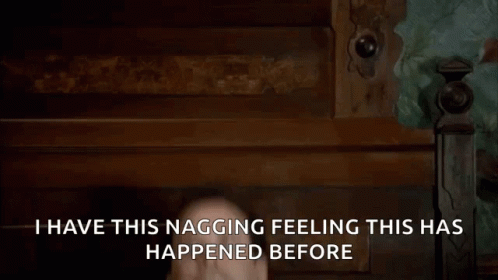Transit talks feel like 'Groundhog Day'
It's the same discussions, over and over again; If Bill Murray figured a way out, can Charlotte?
You’re reading Transit Time, a weekly newsletter for Charlotte people who leave the house. Cars, buses, light rail, bikes, scooters … if you use it to get around the city, we write about it. Transit Time is produced in partnership between The Charlotte Ledger and WFAE.
Do Punxsutawney Phil and Charlotte’s elected leaders have more in common than you think?
By Ely Portillo and Tony Mecia
It’s Groundhog Day, the season when we reflect on winter’s bitter days and turn to midsized, ground-dwelling rodents to predict the future. It’s also a day that’s become synonymous with time loops ever since Bill Murray’s 1993 film of the same name.
In the movie, Murray plays a weatherman who is forced to endure the same day, over and over, until he figures out what he needs to do to break free of the same repeated conversations and interactions so time can move forward again.
Frankly, that’s a little like how we felt watching the city’s transit discussions this week.
In honor of Groundhog Day, and to mark the city’s transit discussion that keeps circling back to the same core points, we’ve compiled a list of the recurring questions that just keep poking their head out of the hole. (Bonus points if you read this while humming the song in the movie that plays on the clock radio every morning: Sonny & Cher’s “I Got You Babe.”)
◼️ To briefly recap: Charlotte wants to spend $13.5 billion to expand its transportation system, with 80% of that going to transit projects (largely a new east-west Silver Line) and the rest going to things like bike lanes, sidewalks, greenways and road improvements. The Republican-controlled General Assembly isn’t on board — House Speaker Rep. Tim Moore blasted the proposal for spending too much on transit and not enough on roads — which is a problem, because the city needs the legislature’s permission to put a one-cent local sales tax on the ballot in Mecklenburg County. No sales tax referendum = no money = no transit.
Here are the four things we heard this week that most strongly made us feel like we’re trapped in “Groundhog Day”:
1. Should Charlotte push for a transit tax?
It’s arguably the most fundamental question here — is Charlotte going to push for a new transit tax referendum in Raleigh, and when?
In 2020, Charlotte Mayor Vi Lyles said, “What I would like to see is a potential referendum in 2021. I don't think we can afford to wait.”
In 2021 and 2022, local leaders again said they thought the city needs a transit referendum ASAP.
Now it’s 2023, and there’s no indication Charlotte has made a formal request of Raleigh for a tax referendum, and there still seems to be disagreement over the strategy to approach the General Assembly.
At the City Council retreat on Monday, staff gave a presentation to make the case for a sales tax as the best way to finance the plan. A sales tax, they said, would cost residents an average of $177 a year, while a property tax would cost $694 a year per household to raise the same amount of revenue.
Council member Malcolm Graham said he thought the city had already decided to pursue a sales tax increase as the only viable plan.
“One I thought we’ve already answered was that we’re going after the sales tax. I didn’t know there was a debate of there being any other option. I thought that was a foregone conclusion,” Graham said.
Adding to the confusion: Dana Fenton, the city’s lobbyist, told council on Tuesday that the city’s plan as-is would be “dead on arrival” in Raleigh, because it would be seen as too Charlotte-centric to gain support.
“Until we either get the nod, or pat the brakes, pump the brakes,” said City Manager Marcus Jones, “we’re just trying to get to the place that this is an option.”
2. Will the plan be regional or Charlotte-focused?
The city is leaning toward building a regional transit strategy as a way to garner support in the legislature, getting regional buy-in from Republican-led counties around Mecklenburg in order to win approval for a referendum.
A regional vision for transit, the more bus-centric “Connect Beyond” plan, is in the works at the Centralina Regional Council. But it’s unclear that counties around Charlotte would be interested in a plan that’s mostly Charlotte-based, especially for any big-ticket spending like new rail lines.
One way around that might be a regional authority to run Charlotte’s transportation system, rather than having it be a city of Charlotte department. City staff showed a comparison of peer cities, all of which have some kind of authority to run their systems.
“Is our current structure, having transit as part of the department, hindering us?” Council member James “Smuggie” Mitchell asked.
The answer: Maybe. But that will take more study, and, of course, many rounds of discussion with our surrounding counties to untangle.
3. How to rebuild uptown’s bus station, and where to put the Silver Line?
City Council wasn’t the only government body meeting about transit this week. The Metropolitan Transit Commission, which sets policy for the Charlotte Area Transit System, also held a meeting Tuesday to discuss the plans for two of the city’s biggest transit projects, the Silver Line and the Charlotte Transportation Center.
Despite months of questions about routing the train around, rather than through, uptown, and about whether burying the bus station underground to build a tower atop it is the best idea, both of those ideas are moving forward.
That’s despite Sustain Charlotte — a major transit advocacy group — voicing concerns about the plans late Tuesday. The group said it’s “deeply concerned about safety, equity and cost of moving the bus station underground” and wants to see a Silver Line route that “prioritizes ridership over development.”
City and regional leaders, though, have repeatedly sided with city staff and have decided against alternatives.
4. What matters more — frequency or ridership?
As CATS struggled to run buses on time last year because of a bus driver shortage, the transit agency cut service. And as it cut service, ridership fell more.
It’s a spiraling problem that a lot of transit agencies across the country are dealing with: Should you try to get riders back by bringing back service, or wait for demand and then add trips?
And like other cities, Charlotte doesn’t seem to have a good answer. “I think it’s a question of what comes first, chicken or the egg, right? We often say well, ridership will be addressed if we address the frequency issue. Well, there’s another component to it, we can’t invest unless we see an increase in ridership,” said Council member Dimple Ajmera.
“It is a bit of a chicken and egg there,” said CATS senior planner Jason Lawrence.
“Frequency does drive ridership and ridership sometimes drives the frequency.”
—
Still feeling unsatisfied after all of that? Don’t worry: it’s apparent that in this movie, the groundhog saw his shadow, foretelling six more weeks (months? years?) of familiar discussions. A City Council committee meets Monday, and the main topic is expected to be — you guessed it — the city’s transit plans.
Ely Portillo is senior editor for news and planning at WFAE, Charlotte’s NPR news source. He was previously with the UNC Charlotte Urban Institute and spent a decade as a reporter at The Charlotte Observer. Reach him at eportillo@wfae.org
Related (and non-Groundhog Day-themed) Transit Time articles:
“Let’s admit that the transit plan is dead” (Jan. 12)
“Management review finds CATS needs a major overhaul” (Jan. 5)
“2022 in transit: plenty of planning, little movement” (Dec. 15, 2022)
What scooter apocalypse? Lime says it stands out from the pack
After last week’s newsletter examining the financial difficulties of scooter companies, we heard from a spokesman for Lime — one of the three companies operating in Charlotte.
He wanted to make clear that while the rest of the industry seems to be falling on hard times that Lime is growing. Unlike competitors Bird and Helbiz, which are public companies whose strained finances are laid bare for all to see, Lime is privately held. That means it doesn’t disclose financial information publicly. He said Lime is still calculating whether it was profitable in 2022.
In contrast to the overall scooter industry — which is pulling back from cities, has suffered layoffs and had lower ridership in Charlotte last year — he said Lime:
had no layoffs in 2022, and actually added staff
is expanding in markets around the world
had a ridership increase of 16% last year in Charlotte
Trisha Botty, Lime’s senior manager of government relations for the U.S. Southeast, told Transit Time in a statement:
Lime is committed to providing Charlotte residents and visitors with safe, affordable and sustainable transportation options in the present and in the future. We plan to be here for the long haul and look forward to working with the city and our community partners to ensure the program runs as best as possible and our riders get the top level service they deserve.
—Tony Mecia
Transit Time is a production of The Charlotte Ledger and WFAE. You can adjust your newsletter preferences on the ‘My Account’ page.
Did somebody forward you this newsletter and you need to sign up? You can do that here:
Other affiliated Charlotte newsletters and podcasts that might interest you:
The Charlotte Ledger Business Newsletter, Ways of Life newsletter (obituaries) and Fútbol Friday (Charlotte FC), available from The Charlotte Ledger.
The Inside Politics newsletter, available from WFAE.












Unfortunately our “leaders” can’t even get tactical decisions right - like the alignment of the Silver line through uptown. I’m not exactly brimming with confidence that they can wrangle a compelling regional plan that has potential to gain support at the state and federal level. Such a shame.
Unfortunately, there are no leaders within the City of Charlotte, Mecklenburg County, or the greater Charlotte Region that advocate for a regional transit system. To a great extent, Charlotte missed the opportunity to build on the momentum of having completed the Blue Line. With the new City Manager and the election of Vi Lyles as Mayor, the city shifted its priorities with affordable housing rising to the top. As we might expect, the costs of construction have risen substantially and they will get even more expensive as the light rail projects are postponed even further. In addition, the excellent work of the Centralina Regional Council's work on a broader plan is helpful, but without the authority to move aggressively. It would seem obvious from the political squabbles between parties that any successful plan must include support beyond the boundaries of the city and the county to include support from the surrounding counties. With significant support from neighboring counties, the likelihood of support from the State of North Carolina and from the federal government is severely diminished. Unless or until there is a regional demand and support, our light rail system is doomed to fail with insufficient support or leadership to move it forward. Further speculation will demonstrate that our efforts will be just like Groundhog Day, postponed for many more years and getting hugely more expensive. Thank you, Charlotte Ledger!